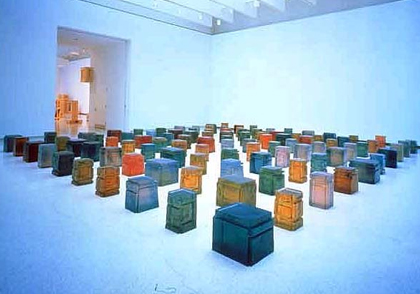For 10 years now, Rachel Whiteread has taken empty spaces – the void below a chair, the hollow beneath a mortuary slab - and turned theminto solid objects. What will she do for her next trick? By Andrew Graham- Dixon
Opinion is divided on the subject of Rachel Whiteread's earliest sources of inspiration. There are those who think Whiteread (born 1963) may have been influenced at a crucial formative stage by the American post-Minimal artist Bruce Nauman's work of 1965, A Cast of the space Under My Chair. Others hypothesise early exposure to Paul Jennings's book of 1967, The Great Jelly of London, an ingenious fantasy revolving around the attempts of a certain Mr Bonamy Didcot to make an enormous jelly using the Royal Albert Hall as a mould:
"Slowly, majestically, as the children cheered, the whole shell of the Albert Hall was lifted higher and higher till everyone could see the splendid orange jelly wobbling and gleaming in the sun. It came out perfectly. Hardly any of it stuck to the Albert Hall. You could see exactly where the organ had been."
An uncanny prefiguration of House, Whiteread's celebrated cast of the insides of a Victorian two-up two-down in Hackney, or merely a coincidence? No matter. "Shedding Life", a retrospective of her work at the Tate Gallery, Liverpool, demonstrates that whatever her influences, Whiteread is an unimpeachably original artist. She had made more, much more of the technique of casting than Bruce Nauman. She has created jelly-mould effects undreamt of even by Mr Bonamy Didcot.
Untitled (One Hundred Spaces), a Whiteread dating from 1995, confronts visitors entering the low-ceilinged galleries of Liverpool. Systematic and somewhat eccentric, it consists of 100 translucent resin casts of the spaces under chairs and tables, laid out grid-fashion in 10 rows...


